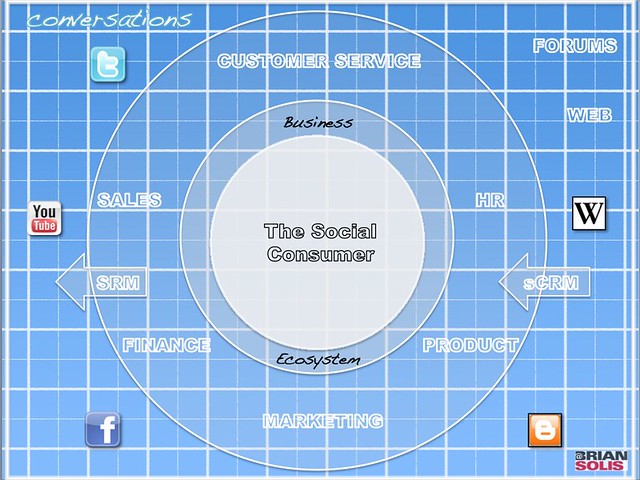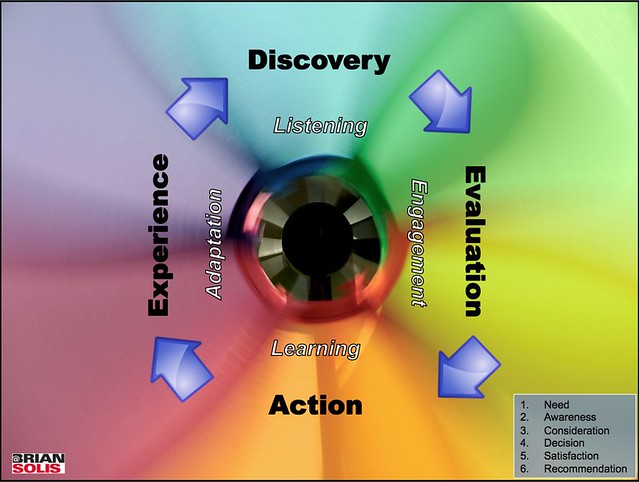
If a conversation takes place online and you’re not there to hear it, did it really happen?
Conversations do not fall into a black hole never to be heard again. And, there is no event horizon preventing their escape.
The social effect is more powerful than we realize. The truth is that if one voice or a chorus of voices finds the right audience, not only will businesses realize that conversations are taking place, they will find a miraculous cure for deafness. And rather than merely reacting, they’ll take the position of leading situations and opportunities.
Social networks are pervasive and it’s where over half a billion people share experiences and seek and offer direction. The conversations that take place within them are amplifying from sporadic mumblings to thunderous roars. Suddenly businesses find that their dirty little secrets that were once imprisoned in semi-private phone calls, emails, and enlivened through trouble tickets now live in the readily public view of existing and potential customers and the people who influence their decisions. The question is, what are you going to do about it?
Sound familiar?
I was told, “We’ll show up from 2-6 to fix your service problem,” but they didn’t. Not only that, I took time off of work and wasn’t even given the courtesy of a phone call that they would not show up. I HATE xx company. I’m done.
This airline sucks. When I check in, I was told, “I’m sorry, there’s nothing we can do about bumping you off this flight or losing your luggage.” Really, well not only did you just lose a customer, I’m going to go out of my way to ensure that no one I know flies you again.
Why do I have this phone if I can’t make phone calls. I don’t care if you’re on Twitter or Facebook, fix the service. I don’t need to hear, “experiencing dropped calls? We’re working on that…but it’s quite normal. What? Your neighbor received a complementary MicroCell because they’re a valued user and your not? We have no idea who sent that unit. We are not aware of such a program.” Yeah…I googled it and guess what I found? Now I’m pissed.
As consumers climb the ranks of social hierarchy, they earn prominence with every new connection they make. Suddenly what was once a simple social graph of friends, families, and peers, is now a market transforming network where the nodes dictate the stature of your brand at any given time. All it takes is for enough of these conversations to align as well as index in search to organically shift impressions and opinions that fundamentally differ from what you push. While both impact decision making, at some point, the myth of control is shattered and the shock of reality materializes a view that is as surprising as it is promising. Depending on the jolt that shakes someone into reality, it boils down to either “aha” or “uh oh.”If Ignorance is Bliss, Awareness is Awakening
2011 looms on the horizon and here we are still debating whether or not social media is worthy of more than simply relegating casual participation on the world’s leading social networks.Social media is rich with the very people who are equalizing the landscape of relevance and influence and as such, it creates an exclusive ecosystem where peer-level attention and engagement is not a given right, rather an earned privilege. To succeed in business here requires the recognition of new opportunities combined with the ability to take action. Focusing on the uncertainties that stem from any combination of fear, ignorance or stubbornness guarantees a steeper incline in the uphill battle that surely awaits. Underestimating the role your brand plays in social media inherently alienates you from connecting with the influential and hyper-connected consumers who define a real-time, real world. As it is, very few companies today are positioned, let alone optimized, for embracing the methodologies that scream for attention and personalization.
From CRM to sCRM to Engagement Management
No one department owns social media. While many of the examples we see highlight what’s possible in marketing or customer service, the reality is that social media demands nothing less than the complete socialization of the entire business. Every division and nuance of business as usual transforms to business unusual as once closed roots between consumers and brand representatives now open to two-way interaction, co-creation, and collaboration.Even though no one person or group owns social media, it begins somewhere. As such, the path of social media within the organization as well as its scenery and duration is largely defined by who the champion is and where they reside within the company. The traffic, toll booths, road closures, and dead ends that lie ahead are dictated by the prevailing culture, infrastructure and philosophy set forth by executive management. For years, technology was built around the philosophy of the business to support a top-down, inside out approach to the market. Now social media introduces the need to support a bottom-up and outside-in system to respond and adapt to the needs of a very different type of business ecosystem.
A Blueprint for Social CRM (sCRM) and Brand Relevance
The migration from CRM to sCRM is much greater than the technology required to modernize processes and systems around social media. It is a pivotal switch in principles, methodologies, and philosophies that humanize the business while also ensuring its relevance. This change is not easy nor is it immediate. We face a leadership that must embrace change and change through openness. The idea of the customer always being “right” now becomes the reality of placing social consumers at the center of business dynamics. This means that listening and responding is not good enough. The ability to listen, adapt and in turn lead, is what it will take for businesses to compete not just for the “now” web, but also the future web.
A Blueprint for Social Engagement (SRM) and Brand Resonance
At the core of social media’s rise to pervasiveness within business is its reputation among decision makers. As individuals, many executives are unsure of how to use social networks such as Facebook, Twitter, et al. in their personal lives, let alone understand the opportunity for building brand relevance in a new medium. Opportunity is abundant for risk takers over the risk averse. The challenge is that without an infrastructure that supports social engagement and collaboration enterprise-wide, we inadvertently fuel social anarchy within. I was one of the early voices to make the case for social CRM. And now I’m championing a new philosophical framework for expanding the role of social CRM to support engagement through Social Relationships Management (SRM).
This blueprint was inspired by my friends at Get Satisfaction and it represents both the landscape for a social business ecosystem and also the gaps that require bridging. This represents the interlacing of disparate systems and thinking while also building an infrastructure or organizing distributed social conversations and experiences. It’s the harmony of CRM, sCRM, and VRM (vendor relationship management) creating a true 360 business that adapts, responds, and leads markets where the markets are defining and emerging.
Again, the future of business is defined by more than technology and a management infrastructure. For this blueprint to lead to the construction of new internal paradigms requires a complete culture shift that results from the initial culture shock. And it’s only made possible through an absolute change in perspective, requiring a more open leadership.
Business leaders are now responsible for defining and reinforcing the consumer experience at every step of the decision making process. Doing so ensures that brand relevance and resonance are built into conversation workflow.

The social consumer is forcing the socialization of businesses. No longer are customer problems and negative experiences contended with behind closed doors. Conversations and connections are unfolding in public and as such closed systems, processes, and technologies isolate businesses from meaningful engagement. The social consumer represents customers, prospects, and influencers and they refuse to be herded. Instead they seek collaboration. These sophisticated consumers are building communities where they are at the center of their experiences and as such, those businesses that step out of their comfort zones will find comfort in new archetypes.
No comments:
Post a Comment